ANIMALS
30 Most Rare and Extraordinary Dog Breeds For Those Who Love This Pet

Every dog is awesome, regardless of its breed, looks, or lineage. However, when you take a stroll down the street or visit a dog park, you’ll likely come across certain breeds more frequently than others. While some breeds are instantly recognizable, there are other uncommon dog breeds that you might encounter for the first time and not even know their names.
Some of these breeds have been deliberately bred for specific purposes, such as guarding or herding. However, there are also instances when unexpected combinations of two very different breeds result in a funny and adorable puppy that is completely unique. It’s fascinating to see these unusual mixes that we may have never encountered before. But let’s not forget that all dogs have evolved from wolves, so in a way, every dog can be considered a bit quirky or, should we say, a descendant of those wonderful and diverse wolves.
In this article, we’ve gathered a selection of uncommon dog breeds that you don’t come across every day at the dog park. Have you ever had the chance to meet any of these unique dogs in person? Feel free to share this article with your friends who adore dogs, and don’t forget to show us pictures of your furry companions in the comments section. We love seeing all kinds of dogs, whether they’re rare or common because every dog is special and cool in its own way.
1. Peruvian Inca Orchid Dog
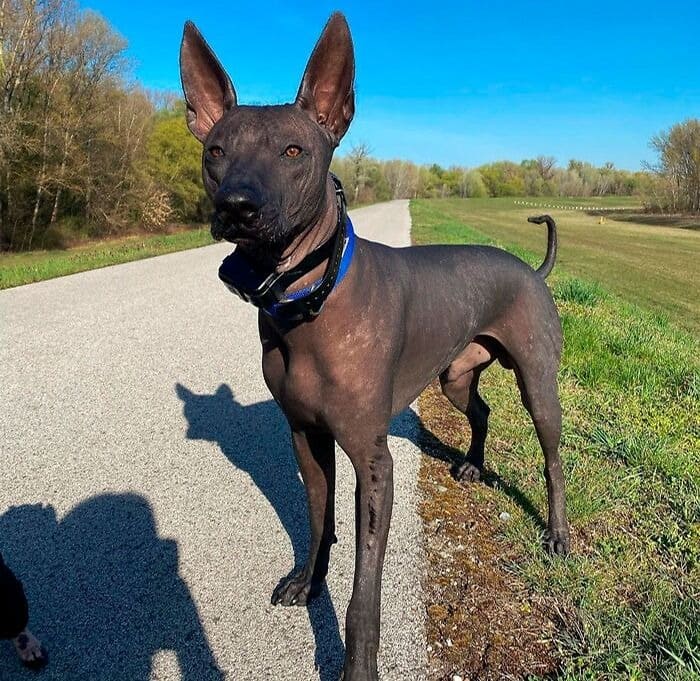 Image source: hairless_dogg,wikipedia.org
Image source: hairless_dogg,wikipedia.org
This dog originates from Peru and belongs to a group of hairless breeds. It holds a special place in the country’s cultural heritage. Peruvian Inca Orchid Dogs are commonly kept as pets and have the unique ability to emit warmth from their bodies, making them excellent cuddle buddies and a source of warmth. They are known for their affectionate nature and intelligence, and they show great protectiveness towards the women and children in their families.
2. Pumi
 Image source: paulinaziolkowska.com_poland,wikipedia.org
Image source: paulinaziolkowska.com_poland,wikipedia.org
This dog breed from Hungary is famous for its amusing facial expressions. Although they have been bred since the 17th century, their official standards were only established in 1935. Pumis are versatile sheepdogs, skilled in herding, driving, and managing livestock. While they can be a bit talkative at times, they are also known for their intelligence and liveliness.
3. Estrela Mountain Dog
 Image source: karrot1312,wikipedia.org
Image source: karrot1312,wikipedia.org
The Estrela Mountain Dog is not only skilled at guarding herds but also a strong adversary for any potential prey it encounters. It has a natural instinct to protect children and doesn’t require specific training to do so. However, due to their independent nature, it is crucial to begin training them early on.
4. Xoloitzcuintli
 Image source: gypsygirlie,wikipedia.org
Image source: gypsygirlie,wikipedia.org
The Xoloitzcuintli is a type of hairless dog, but interestingly, some litters can have both hairless and coated puppies. The breed gets its name from Xolotl, the Aztec deity associated with fire and lightning. Due to limited selective breeding in their place of origin, Mexico, Xoloitzcuintli dogs have maintained their innate traits of intelligence, energy, and excellent social abilities.
5. Schipperke
 Image source: holly_thebeautiful,wikipedia.org
Image source: holly_thebeautiful,wikipedia.org
Although it is believed that the Schipperke breed was originally bred as a dog for the canals of Belgium, the name can be translated as either “little captain” or “little shepherd” depending on the region. While Schipperkes were commonly found on barges and small boats in the 1880s, their ancestry can be traced back to a shepherd dog known as the Leauvenaar, suggesting that their initial purpose may have been to protect herds of animals.
6. Basenji
 Image source: ana_jiordanna,wikipedia.org
Image source: ana_jiordanna,wikipedia.org
Basenjis have their origins in Congo, a country in Africa. In addition to their unique appearance, they possess several fascinating characteristics that set them apart from other breeds. For instance, Basenjis are not known for barking frequently; instead, they often emit a distinctive yodel-like sound. Another noteworthy aspect is that female Basenjis have a limited reproductive cycle, being able to reproduce only once a year.
7. Swedish Vallhund
 Image source: kaiathelittlevallhund,wikipedia.org
Image source: kaiathelittlevallhund,wikipedia.org
Swedish Vallhunds have a long history that dates back to the 8th or 9th century when they were specifically bred to herd and drive cows. Unfortunately, by 1942, this breed was at the edge of disappearing completely. However, dedicated efforts, along with raising awareness, successfully revived the breed. With their short legs, Swedish Vallhunds are adept at staying low to the ground and nipping at the ankles of misbehaving cows. Presently, they hold the esteemed status of being recognized as the national dog of Sweden.
8. Coton De Tulear
 Image source: coton_boriii,wikipedia.org
Image source: coton_boriii,wikipedia.org
Meet the national dog of Madagascar, the Coton de Tulear! This adorable breed, named after a city, is more like a fluffy cloud than a hunting dog. For ages, it has been the cherished companion of the ruling tribe of Madagascar, the Merina, and has rightfully earned the esteemed title of the Royal Dog of Madagascar.
9. Old English Sheepdog
 Image source: zhenlin.26,wikipedia.org
Image source: zhenlin.26,wikipedia.org
Do you remember Prince Eric and his dog Max from The Little Mermaid? Max was an Old English Sheepdog, also known as a bobtail. These dogs are incredibly laid-back and bring a lot of joy to any household. Their herding instincts can still be strong, so you might find them gently nudging children as if herding them. But hey, that can be a good opportunity for you to take a break and enjoy a cup of tea!
10. Tibetan Mastiff
 Image source: eva.trost.33,wikipedia.org
Image source: eva.trost.33,wikipedia.org
In its homeland of Tibet, the Tibetan Mastiff is known as the “nomad dog” or “lion dog.” With their impressive size, they are excellent at deterring any potential wrongdoers from approaching your home. However, owning a Tibetan Mastiff can be a bit challenging since they are intelligent yet stubborn. These dogs were originally bred to safeguard Buddhist monasteries from large animals, and they still possess their innate protective instincts.
11. Leonberger
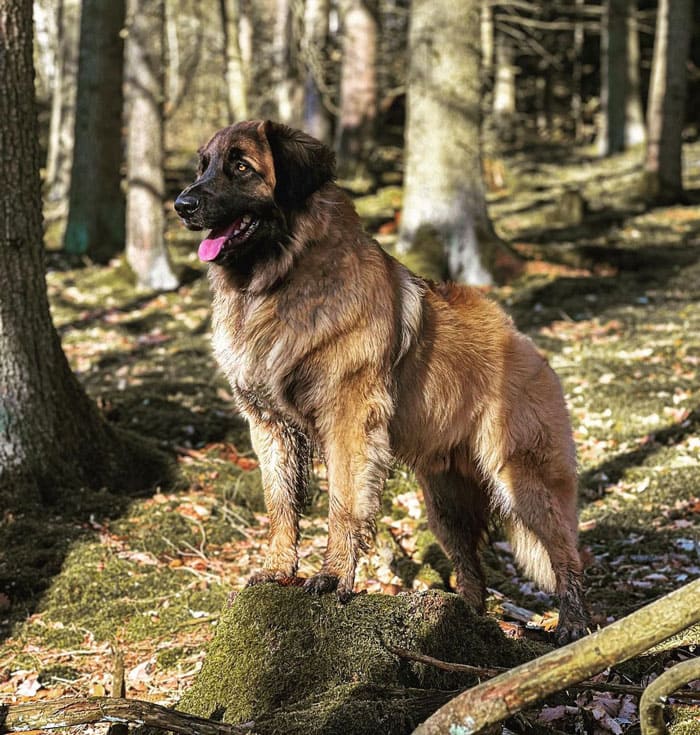 Image source: duke_malakai,wikipedia.org
Image source: duke_malakai,wikipedia.org
Despite its large size, the Leonberger is surprisingly agile and excels in search and rescue operations, particularly in water. However, its primary purpose is to be a loving family dog, and it stays true to that role. You can trust the Leonberger to be gentle and protective around your little children, ensuring their safety and well-being.
12. Catalburun
 Image source: justaroundthecornerpetsitting,wikipedia.org
Image source: justaroundthecornerpetsitting,wikipedia.org
Originally developed in Turkey for hunting small game, particularly partridge and francolin, the Catalburun is a unique dog breed distinguished by its split nose, which is a rare trait shared by only two other breeds. Due to its limited population, the Catalburun is considered to be a highly uncommon breed. However, their exceptional sense of smell has led to their training as detection dogs for tasks such as identifying drugs, explosives, and assisting in search and rescue operations.
13. Nederlandse Kooikerhondje
 Image source: copperthekooiker,wikipedia.org
Image source: copperthekooiker,wikipedia.org
The name “Kooikerhondje” comes from Dutch and means “duck catcher’s small dog,” which perfectly describes the main job of this breed. Kooikerhondjes belong to the spaniel family and are known for being joyful, well-mannered, sociable, and attentive. While they may take a little while to warm up to new people, once they do, they remain loyal for life.
14. Bergamasco Sheepdog
 Image source: joanna_bergamasco,wikipedia.org
Image source: joanna_bergamasco,wikipedia.org
If you want to work with sheep, it helps to blend in with them. The Bergamasco Sheepdog has perfected this skill. They come from the Italian side of the Alps and were specifically bred to be herding dogs. Their entire body is covered in long fur, which provides them with excellent protection in harsh weather conditions.
15. Cane Corso
 Image source: f.pinja,wikipedia.org
Image source: f.pinja,wikipedia.org
If you’ve ever taken a walk with a Cane Corso by your side, you’ve likely experienced how people instinctively create space for this magnificent and imposing dog. While they excel at protecting their loved ones, Cane Corsos are also incredibly affectionate towards their own humans.
16. Pharaoh Hound
 Image source: hope.pharaoh.hound,wikipedia.org
Image source: hope.pharaoh.hound,wikipedia.org
The Pharaoh Hound, known as Kelb tal-Fenek in the native Maltese language, earned its name “rabbit dog” due to its skill in hunting rabbits. Its English name is derived from its resemblance to dogs depicted in Ancient Egyptian artwork. Although there are claims of its Egyptian origins, the Pharaoh Hound is actually a relatively recent breed that has become traditional in rural Malta.
17. Beauceron
 Image source: odinbeauceron,wikipedia.org
Image source: odinbeauceron,wikipedia.org
Beaucerons are highly versatile workers, capable of guarding and herding sheep and cattle, ensuring their safety from wolves. They have also been utilized in various roles during times of war, such as messengers, land mine detectors, and supply transport dogs. In times of peace, Beaucerons often find employment as police or rescue dogs.
18. Catahoula Leopard Dog
 Image source: wileyriley.catahoula,wikipedia.org
Image source: wileyriley.catahoula,wikipedia.org
The state of Louisiana has its own official dog known as the Catahoula Leopard Dog. Many of them have leopard-like spots in different colors, but they can also have solid coats. While originally bred for hunting, Catahoula Leopard Dogs are also skilled in herding and excel as search and rescue dogs.
19. Finnish Spitz
 Image source: keroaava,wikipedia.org
Image source: keroaava,wikipedia.org
Although the Finnish Spitz was initially bred as a hunting dog capable of pursuing various prey such as grouse, elk, and occasionally even bears, it also makes a wonderful companion in the home and forms strong bonds with family members. In Finland, where it is still commonly employed for hunting purposes, the Finnish Spitz has been officially recognized as the national dog since 1979.
20. Thai Ridgeback
 Image source: shredder_sommer,wikipedia.org
Image source: shredder_sommer,wikipedia.org
The Thai Ridgeback is a unique dog breed, known for the distinct ridge of fur on its back that grows in the opposite direction compared to the rest of its hair. Although these dogs are intelligent and loyal, their independent nature makes them better suited for owners who have considerable experience with dogs.
21. Saluki
 Image source: enayat.salukis,wikipedia.org
Image source: enayat.salukis,wikipedia.org
Originating from the Middle East, Salukis are a breed known for their short fur, except for their long ears that are completely covered in hair. With their long legs and snouts, Salukis excel as hunters. They belong to the sighthound category, which includes dogs that rely on their sight rather than their sense of smell for hunting.
22. Stabyhoun
 Image source: stabitytto_rilla,wikipedia.org
Image source: stabitytto_rilla,wikipedia.org
The Stabyhoun is a highly uncommon dog breed that comes from the Netherlands. Originally a farm dog in the province of Friesland, it has been mentioned in literature since the early 1800s. However, it wasn’t until the 1960s that the breed gained recognition beyond the province, and it only started spreading outside the Netherlands in the 2000s.
23. Grand Basset Griffon Vendeen
 Image source: dio.gbgv,wikipedia.org
Image source: dio.gbgv,wikipedia.org
To become a legendary hero in your nation’s stories, you have to be truly exceptional at what you do. The Grand Basset Griffon Vendéen is celebrated for its remarkable endurance and courage. Despite its relatively small size and short legs, it excels at hunting hares. Being pack dogs, they thrive when they have plenty of time with their humans or another dog or cat as a companion.
24. Russian Toy
 Image source: mishatherussiantoyterrier,wikipedia.org
Image source: mishatherussiantoyterrier,wikipedia.org
The Russian Toy breed faced near extinction on two occasions, first in the 1920s and then again in the 1990s, but managed to survive. It wasn’t until after the 1990s that they were introduced to the international community. Originally bred to combat rats and serve as watchdogs, Russian Toys still retain their vocal nature. They form strong bonds with their family members, regardless of their age.
25. Otterhound
 Image source: sir_percy_the_intrepid,wikipedia.org
Image source: sir_percy_the_intrepid,wikipedia.org
Otterhounds were initially bred for hunting otters, which makes them skilled in both land and water environments. It’s worth noting that they possess webbed feet, a distinctive feature not commonly found in dogs. These breeds are typically known for their friendly nature toward humans and their deep, distinctive bass voices.
26. Dandie Dinmont Terrier
 Image source: dandiedachshund,wikipedia.org
Image source: dandiedachshund,wikipedia.org
Dandie Dinmont Terriers are characterized by their unique appearance, featuring a long body, short legs, and a notable hairstyle. These dogs have a friendly and relaxed temperament, making them excellent companions for older children. Interestingly, the breed’s name is believed to have originated from a character in Sir Walter Scott’s novel called Guy Mannering.
27. Canaan Dog
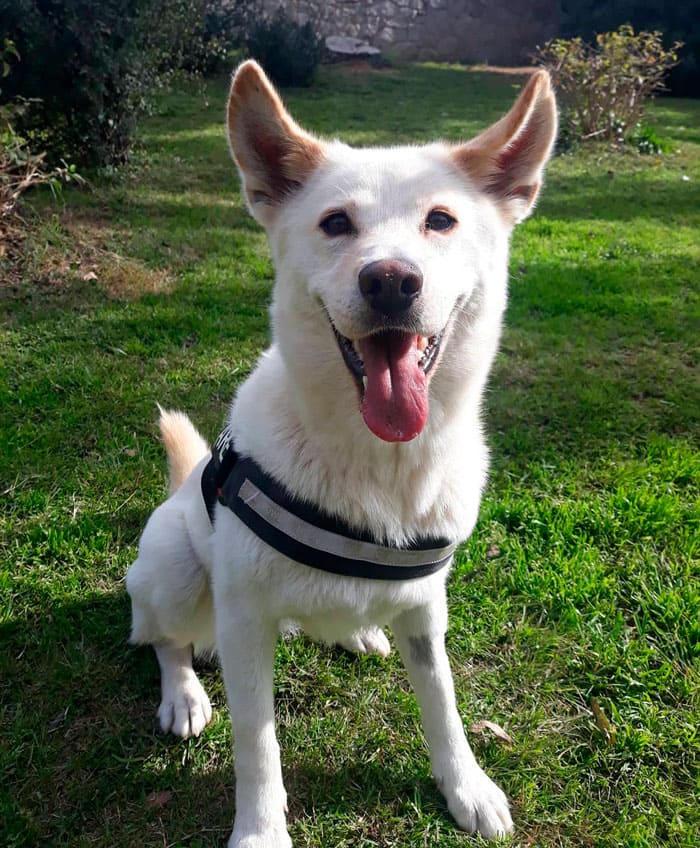 Image source: _area.15,wikipedia.org
Image source: _area.15,wikipedia.org
Introducing Israel’s national dog, the Canaan Dog. Throughout history, the bedouins of the Middle East relied on these dogs to guard their camps and herds. This protective instinct has been preserved in the breed, making them agile and vigilant guardians of their home and family. However, they are not inherently aggressive. Canaan Dogs form strong bonds with their human companions but may be reserved with strangers, preferring to keep their distance.
28. Skye Terrier
 Image source: w41ter_,wikipedia.org
Image source: w41ter_,wikipedia.org
With a body length twice as long as its height, the Skye Terrier is believed to have originated from the Isle of Skye in Great Britain, which explains its name. Despite their hunting ancestry and the need for daily walks, Skye Terriers are more inclined to be indoor companions. Unfortunately, they are considered an endangered breed due to the limited number of births each year.
29. Norwegian Lundehund
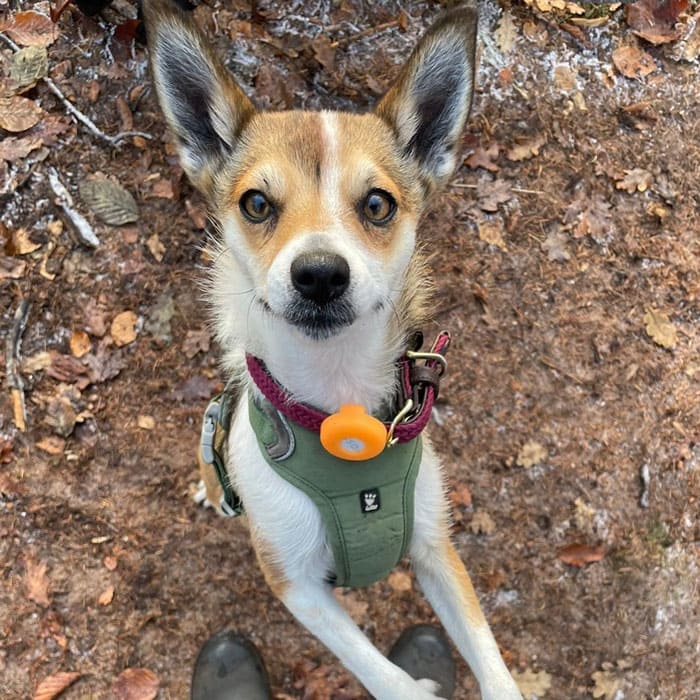 Image source: wonderfuldoglife,wikipedia.org
Image source: wonderfuldoglife,wikipedia.org
The name “Lundehund” is a combination of two Norwegian words: “lunde,” which means puffin, and “hund,” which means dog. This particular breed was developed for the purpose of hunting puffins and their eggs. Since puffins often nest in hard-to-reach spots on cliffs, the Norwegian Lundehund is equipped with six toes on each paw to aid in climbing and gripping the cliff edges.
30. Schapendoes
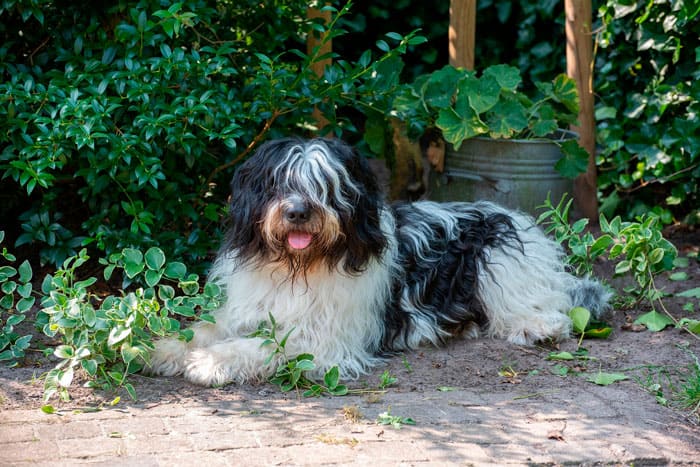 Image source: wikipedia.org
Image source: wikipedia.org
Schapendoes dogs were originally bred to work on farms and help with herding livestock. Unfortunately, during World War II, the breed faced a significant decline, and only a few dogs remained, putting them at risk of disappearing completely. However, dedicated breeders worked hard to revive the breed, ensuring its survival. While Schapendoes dogs may not excel at guarding, they thrive in sports and activities, displaying a lively and loving nature.
ANIMALS
Amazing Video of Unseen Ocean Creatures in the Ningaloo Canyons

The Schmidt Ocean Institute recently explored the Ningaloo Canyons on the western coast of Australia using a robotic underwater vehicle called the ROV Sebastian. Check out the amazing video of what they discovered in the deep parts of the Indian Ocean.
More info: Youtube




ANIMALS
These Pics Are Art and the Artists Are Insects

Flying insects move so quickly that they are hard to follow, but new technology and some smart ideas have helped Spanish photographer Xavi Bou do just that. After spending 10 years focusing on birds in flight for his Ornithographies project, he turned his attention to insects.
For Entomographies, he uses high-speed video footage taken by Adrian Smith, an insect expert at North Carolina State University, to study and record how insects move. Bou then picks multiple frames and combines them into single images that show the fast movements of one or more insects through space and time.
With Smith’s help, Bou has captured the aerial tricks of wasps, the jumps of leafhoppers, and the fluttering of butterflies in amazing detail. He hopes that by doing this, he can make people more aware of the decline in important insect populations around the world.
1. Zebra longwing
This butterfly, which is common in many areas of the Americas, really fits its name. It can fly very high with just a few flaps of its large wings.
 Image source: nationalgeographic
Image source: nationalgeographic
2. Two-lined spittlebug
This insect, which comes from the eastern United States, is often seen as a pest because it likes to eat grass. Its springy back legs can make it jump into the air like a rocket.
 Image source: nationalgeographic
Image source: nationalgeographic
3. Yellow-collared scape moth
Unlike most moths, this North American species flies during the day. Its shiny blue-black wings sparkle in the sunlight.
 Image source: nationalgeographic
Image source: nationalgeographic
4. Ailanthus webworm moths
These tropical moths have spread farther north in the U.S. Because of their larval host, the invasive tree of heaven, they are now one of the most common backyard moths in the country.
 Image source: nationalgeographic
Image source: nationalgeographic
5. Common stonefly
Mostly found in eastern North America, this insect starts its life as an underwater nymph in forested streams or rivers. Then it leaves the water, sheds its skin, and becomes an adult with wings.
 Image source: nationalgeographic
Image source: nationalgeographic
6. Green lacewings
Eighty-seven species of this insect have been found in the U.S. and Canada. Since they eat a lot of unwanted plant pests like aphids and mites, they are often used to naturally control these pests.
 Image source: nationalgeographic
Image source: nationalgeographic
7. Grapevine beetle
This insect, fittingly named, eats the leaves and fruit of grapevines, both wild and farmed, but it doesn’t do much damage to the plants. As a type of scarab beetle, it often flies in a curved path.
 Image source: nationalgeographic
Image source: nationalgeographic
8. Oak treehopper and green treehopper
Treehoppers are known for their uniquely shaped pronotum, the part behind their head, which often looks like plant parts to hide from predators. They can jump well thanks to special muscles.
 Image source: nationalgeographic
Image source: nationalgeographic
9. Banded orange
This brightly colored butterfly can be found from Mexico to Brazil. Before mating season, male butterflies look for mineral salts, sometimes even drinking salty fluids from the skin, eyes, and nostrils of other animals.
 Image source: nationalgeographic
Image source: nationalgeographic
10. Sapho longwing
Longwings can live for 6 to 7 months, longer than most butterflies. This type, found from Mexico to Ecuador, has shiny blue wings, which is why it’s also called the Sapphire longwing.
 Image source: nationalgeographic
Image source: nationalgeographic
ANIMALS
Eagle and Fox in an Epic Midair Battle Over a Rabbit, Were Captured by a Photographer

Wildlife photography often depends on the perfect combination of good timing and the right place.
That’s exactly what happened when Kevin Ebi, an experienced wildlife photographer, captured an incredible battle between a bald eagle and a red fox, both competing for a rabbit meal.
In a detailed blog post, Ebi shares the fascinating series of events that unfolded while he was photographing foxes in San Juan Island National Historical Park, located in Washington state.
Ebi noticed a lively group of eight fox kits as they began their hunting lessons. Suddenly, they spotted a rabbit, and a thrilling chase ensued. Eventually, one of the foxes emerged as the winner, proudly carrying the rabbit across the field.
 Image source: Kevin Ebi
Image source: Kevin Ebi
Ebi shares what happened at that moment: “As I followed the fox with my camera, a sudden bald eagle cry caught my attention. It was swiftly approaching, clearly aiming for the rabbit. I quickly focused on the fox, anticipating a quick turnover of events.”
To Ebi’s astonishment, instead of a quick surrender, the situation turned into a intense fight in the air.
The eagle used its power to lift the fox and rabbit high up in the sky. Even while airborne, the fox attempted to break free by swinging back and forth.
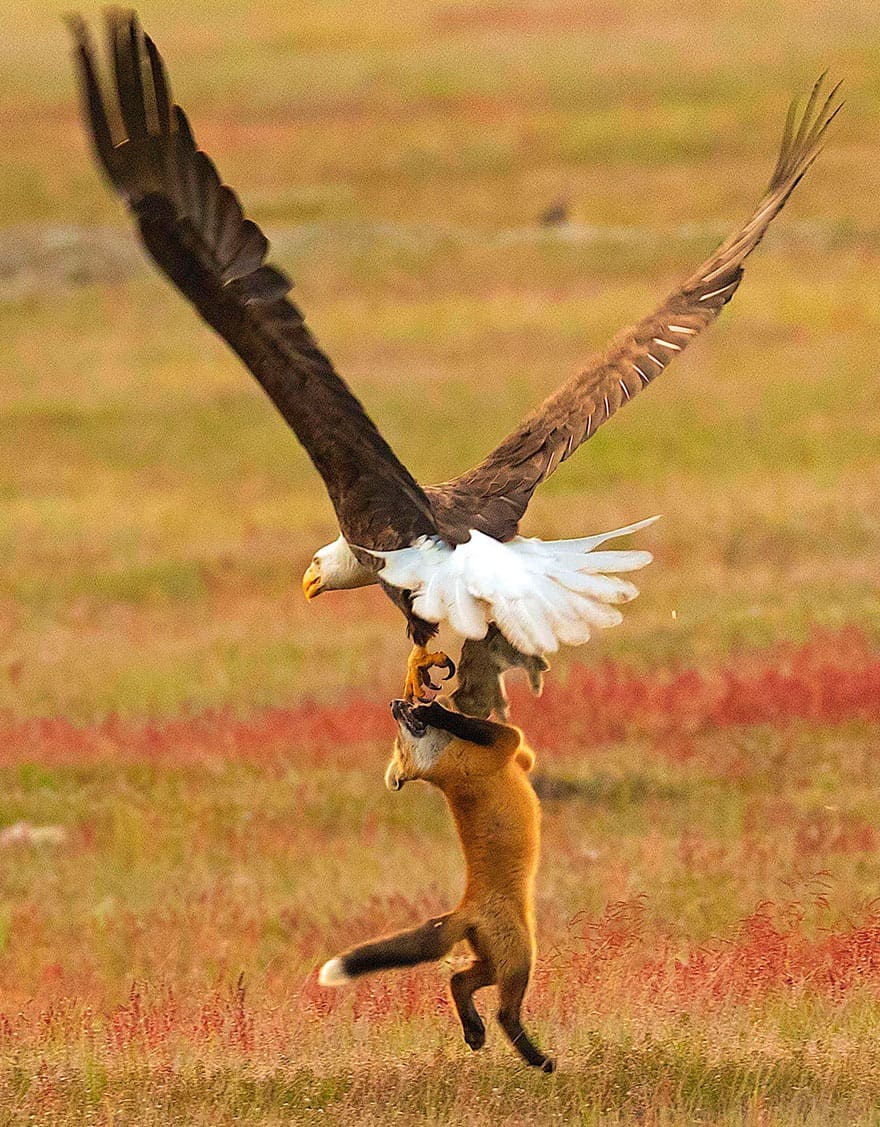 Image source: Kevin Ebi
Image source: Kevin Ebi
 Image source: Kevin Ebi
Image source: Kevin Ebi
 Image source: Kevin Ebi
Image source: Kevin Ebi
In the end, the eagle moved the rabbit to its other claw, causing the fox to let go. The intense battle came to an end in less than 10 seconds.
 Image source: Kevin Ebi
Image source: Kevin Ebi
For those worried about the fox’s well-being after the fight, Ebi reassures that it was not injured. The fox swiftly bounced back from the encounter and resumed its playful behavior with the other young foxes, showing no visible wounds from the aerial clash.
 Image source: Kevin Ebi
Image source: Kevin Ebi
 Image source: Kevin Ebi
Image source: Kevin Ebi
 Image source: Kevin Ebi
Image source: Kevin Ebi
 Image source: Kevin Ebi
Image source: Kevin Ebi
-

 GARDEN10 tháng ago
GARDEN10 tháng ago4 Easiest Ways to Get Free Plants
-

 ANIMALS10 tháng ago
ANIMALS10 tháng agoBritish Angler Caught Huge 67-Pound Goldfish in the World
-

 FUNNY10 tháng ago
FUNNY10 tháng ago30 Weirdest Things That People Came Across On The Subway
-

 FUNNY10 tháng ago
FUNNY10 tháng ago30 Funny and Perplexing Photos That Make You Laugh All Day
-

 GARDEN9 tháng ago
GARDEN9 tháng ago30 Shimmering Side Yard Landscape Ideas
-

 ANIMALS10 tháng ago
ANIMALS10 tháng agoKindhearted Driver Rescues Skinny Dog Hiding Near Highway Thanks to His Eagle Eye
-

 FUNNY10 tháng ago
FUNNY10 tháng ago22 Design Fails That Will Make You Laugh Out Loud
-

 ANIMALS10 tháng ago
ANIMALS10 tháng agoMore Than 3 Million People Baffled by Video of Strange Figure on the Beach





